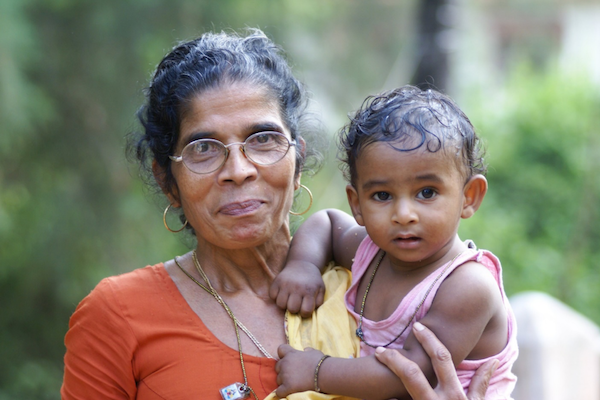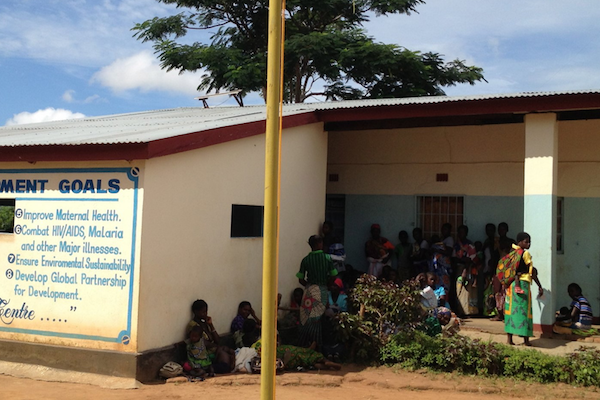
Socioeconomic Factors Contributing to Disproportionate Rates of Visual Impairments in India
This article is the first part of a series that will explore the social determinants of health with an emphasis on visual health.
Analyzing health inequalities on a global scale:
In 2019, the World Health Organization reported that over 2 billion people suffer from a visual impairment, almost 90% of whom live in developing countries. This disproportionate percentage is an unfortunate product of health inequalities manifesting on a global scale. Health inequality is interwoven with other societal factors, such as employment, education, and nutrition, which underpin a society’s health and well-being. Thus, understanding these social determinants of health can be instrumental in developing effective public health solutions.
This article is the first part of a series that will explore the social determinants of health with an emphasis on visual health. In this post, we’ll explore how socioeconomic factors can affect access to eye care in the developing world. This post will focus on India, as my travels there allowed me to firsthand observe and more thoroughly understand the impacts of socioeconomic status on visual health.
Last summer, I visited Bangalore, the Silicon Valley of India, with my family. On walks with my uncle, we saw not only the beauty and innovation that let Bangalore gain global recognition, but too often, we also saw the gaunt faces of families who were too destitute to eat three meals a day. Intergenerational poverty, still present in the remnants of the caste system, has left a significant percentage of the population penniless (in fact, to this day, two-thirds of the population still earns less than $2 every day). These people face tremendous challenges in their day-to-day lives and are at a high risk of developing adverse health conditions due to the inaccessibility of health services. It’s unjust that their income has such a powerful influence on their health—health should be considered a human right, not merely a privilege of wealth.
But exactly why does socioeconomic status have such a tremendous impact on visual health? Many interconnected explanations are responsible for the connection between wealth and visual impairments, but there are three that seem to be the most responsible: a limited source of income, unsatisfied nutritional needs, and distance to accessing professional care.
Limited income:
The costs of diagnosing and treating a visual impairment can place low-income families in financial stress. To exacerbate this, as over 56% of India’s population is not covered by health insurance, they have to pay out-of-pocket. Instead, many choose to spend their money on physiological needs such as food and housing.
Parents of low-income families often prioritize the health and well-being of their children, not just out of parental concern but also because they often work manual labor jobs (such as on tea estates) where maintaining the child’s future human capital is necessary. However, even if their children are able to access healthcare, many may experience discrimination from their health provider based on their caste, religion, or gender, which can render treatment inaccessible and unavailable.
Nutritional needs:
If people have a limited source of income, they’re more likely to suffer from nutritional deficiencies. This is critical because the eye has one of the most complex and vital functions of the body, and to perform them, it requires an array of nutrients: various vitamins (A, C, & E), lutein, zeaxanthin, omega-3 fatty acids, gamma-linolenic acid, and zinc. As a matter of fact, due to the eye’s sensitivity, any nutritional deficiencies can increase the risk of developing a visual impairment. For example, it’s estimated that 250,000-500,000 children become blind due to the lack of available vitamin A alone.
In India, many low-income families subsist on staple foods such as bhat and varan (rice and lentils). Although fruits and vegetables may be sold for cheap prices, they’re often grown and sold in unsanitary environments (e.g. polluted water, farms with high concentrations of pesticides, unhygienic street carts, etc.), which makes eating these fruits without adequate sanitation dangerous. Because many low-income families lack access to clean running water or other ways to properly clean produce, many aren’t able to eat certain fruits and vegetables, decreasing vitamin and mineral absorption. As a result, many develop nutritional deficiencies, leading to an increased rate of visual impairments, among other conditions.
Distance from professional care:
Once, when I helped my uncle take my grandfather to a hospital in Bangalore, I saw many families from rural areas who had traveled far for in-patient care. Professional care—usually located in large hospitals in metropolitan areas—can often be far from rural villages and smaller towns, placing it far outside of the activity space of many. Despite the Indian government’s efforts to require a health sub-center for every 5,000 people, these rules are overlooked in up to 45% of rural areas due to lack of proper infrastructure and ineffective national health policies.
Hence, people in rural areas often visit local village doctors instead, the majority of whom lack the proper education and qualifications for more serious medical procedures. Although they might be able to provide outpatient care and help with minor issues, such as distributing band-aids and antibiotics, they may not have the knowledge and resources to help when the problem at hand is more complex. Hence, many health problems can be left undiagnosed and untreated for several years. This especially impacts visual impairments: because most visual impairments develop gradually, such as myopia and cataracts, they may not be detected until far beyond the point of a simple correction. Because it’s important to detect these conditions at their onset to prevent any further progression, these problems tend to be magnified in rural communities.
What the future holds?
Thankfully, however, tremendous strides are being made around the world, and millions of families are lifted out of poverty every year. Governments around the world are increasingly funding social development programs to address the societal factors responsible for health disparities. For example, recent expansions of India’s Public Distribution System (PDS) have helped provide more nutritious meals to those suffering from extreme poverty. In addition, although village doctors may not be able to aid impairments that require surgical intervention, many public health initiatives strive to make quality medical procedures more affordable, such as the University of Michigan’s low-cost cataract surgery clinic in Madurai, India.
Yet, these programs are just a step in the right direction. Due to the sheer scale of this issue, it’s our obligation as global citizens to assist those in need. There are plenty of ways we can contribute to the cause, even from the United States: contributing to vision charities, donating our used eyeglasses, and spreading awareness of the issue are just a few. Through the combined efforts of government actors, nonprofit organizations, and passionate individuals, the world may eventually transform for the better: a place where visual health is a right, not a privilege.
Featured image source: Pixabay
Soham Govande is a junior at Round Rock High School in the Austin, TX area. He is deeply passionate about the intersection of cultural anthropology and public health, specifically with a focus on eye care.
With this in mind, he recently founded a nonprofit organization, Together We See, with an aim to reduce health disparities around the world. In addition, he developed an app, OcularCheck, which won first place at the Congressional App Challenge in Washington D.C.







